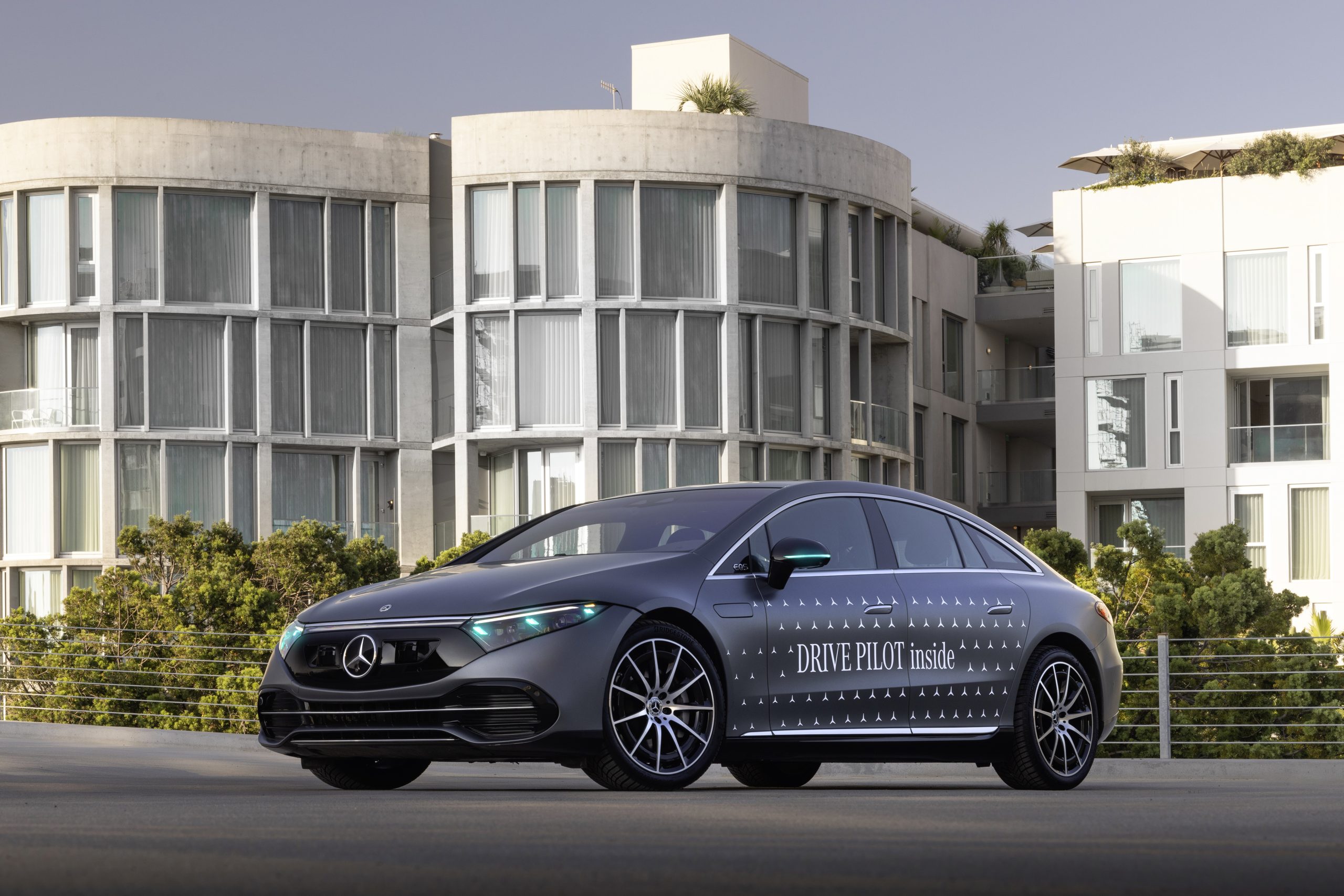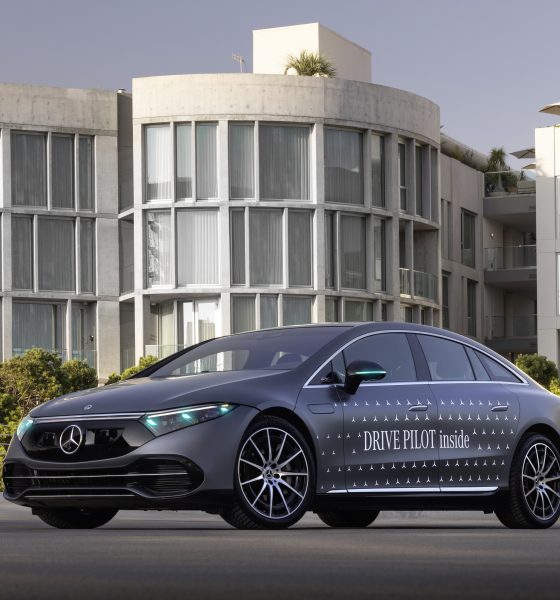Mercedes has now been approved in two states to be able to use turquoise lights to signify when its vehicles are in an automated driving mode.
On Tuesday, Mercedes shared a press release announcing that it has received exemptions in California and Nevada to test special turquoise marker lights to indicate its automated driving mode. The states have each granted permit approvals that allow Mercedes to use the colored lights in certain EQS and S-Class vehicles equipped with its Drive Pilot partially automated driving mode.
“We are the first automaker in the world to receive such approvals in the U.S., specifically in California and Nevada,” said Markus Schäfer, Mercedes-Benz board member and Chief Technology Officer of Development & Purchasing. “The more automated driving vehicles populate the road, the more important communication and interaction between the vehicle and the environment become.”
The turquoise lights will be integrated into the headlights, taillights and side mirrors of Mercedes’s vehicles, set to show surrounding drivers that the cars are driving in the partially automated driving mode.
Credit: Mercedes Credit: Mercedes Credit: Mercedes
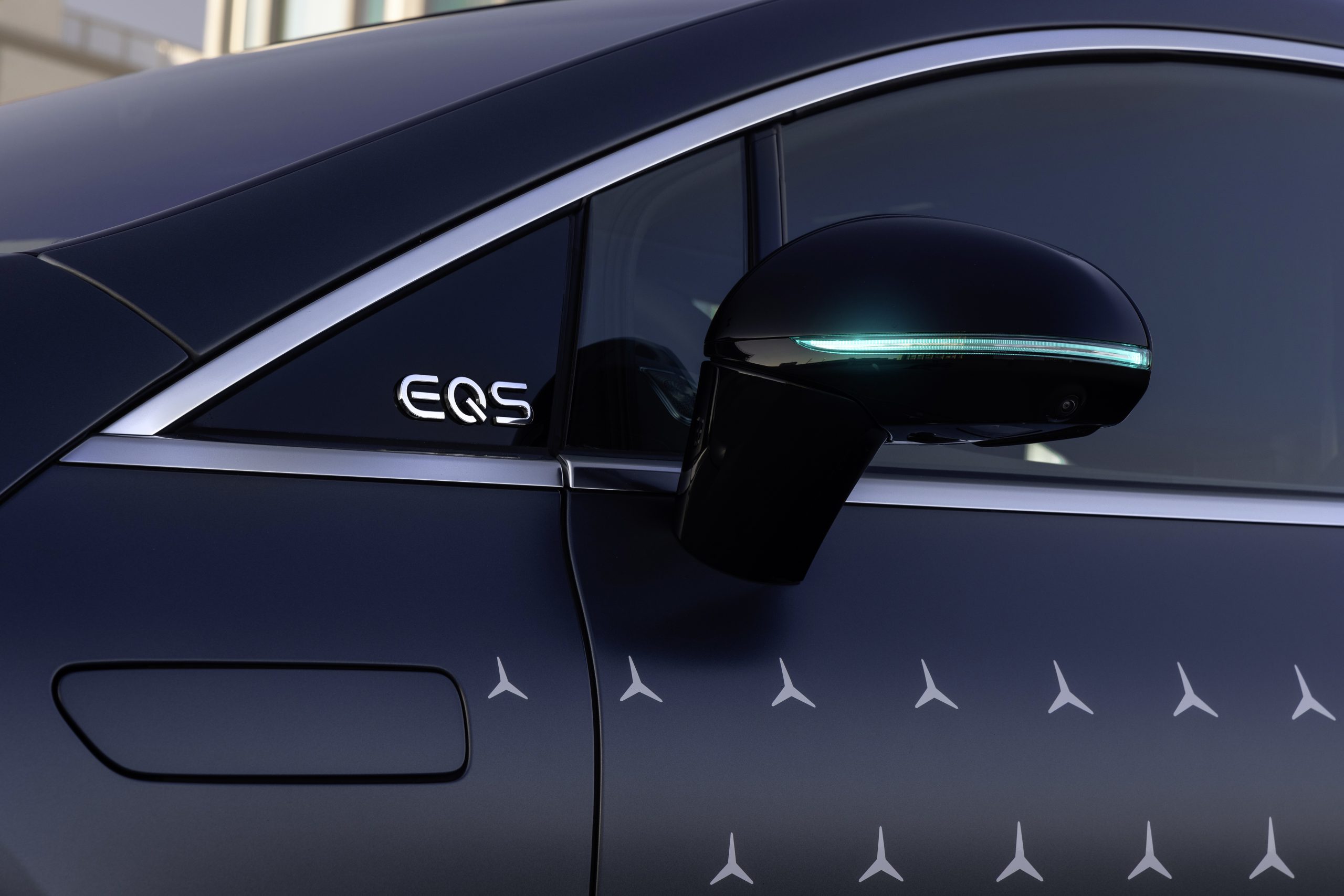
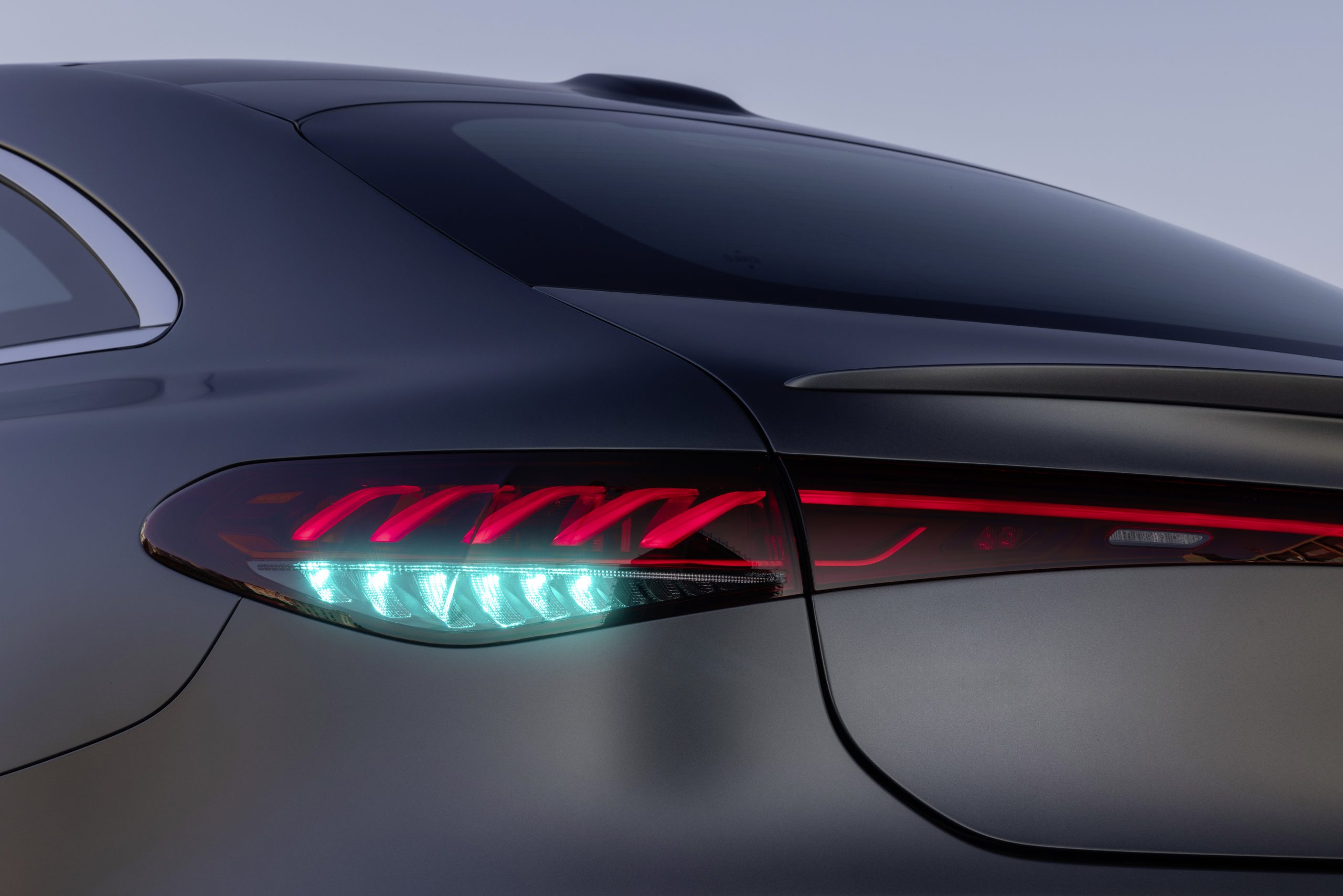
The California permit has an initial limit of two years, while the Nevada permit specifically applies to the 2026 EQS and S-Class model years. In addition, the Nevada permit will remain valid until any legislative changes are made in the state legislature.
Mercedes said it chose turquoise to differentiate from existing emergency and traffic light colors, in accordance with SAE International’s J3134 recommendation of “ADS Marker Lamps,” which suggests the color for use with automated driving systems. The turquoise color comes as an exemption to the currently approved amber, white and red lights, which are used to indicate the use of turn signals or caution lights, forward driving, and reverse driving, respectively.
The automaker also says it hopes the color will be used to help create an industry-wide standard, adding that there are no regulations for automated driving indications in auto markets around the world.
Drive Pilot, Mercedes’s automated driving system rated by SAE International for Level 3 automation, gained approval in the U.S. earlier this year. The company is set to begin customer deliveries of Drive Pilot-equipped vehicles in early 2024 in California and Nevada.
You can see SAE International’s automated driving levels below.
Credit: SAE International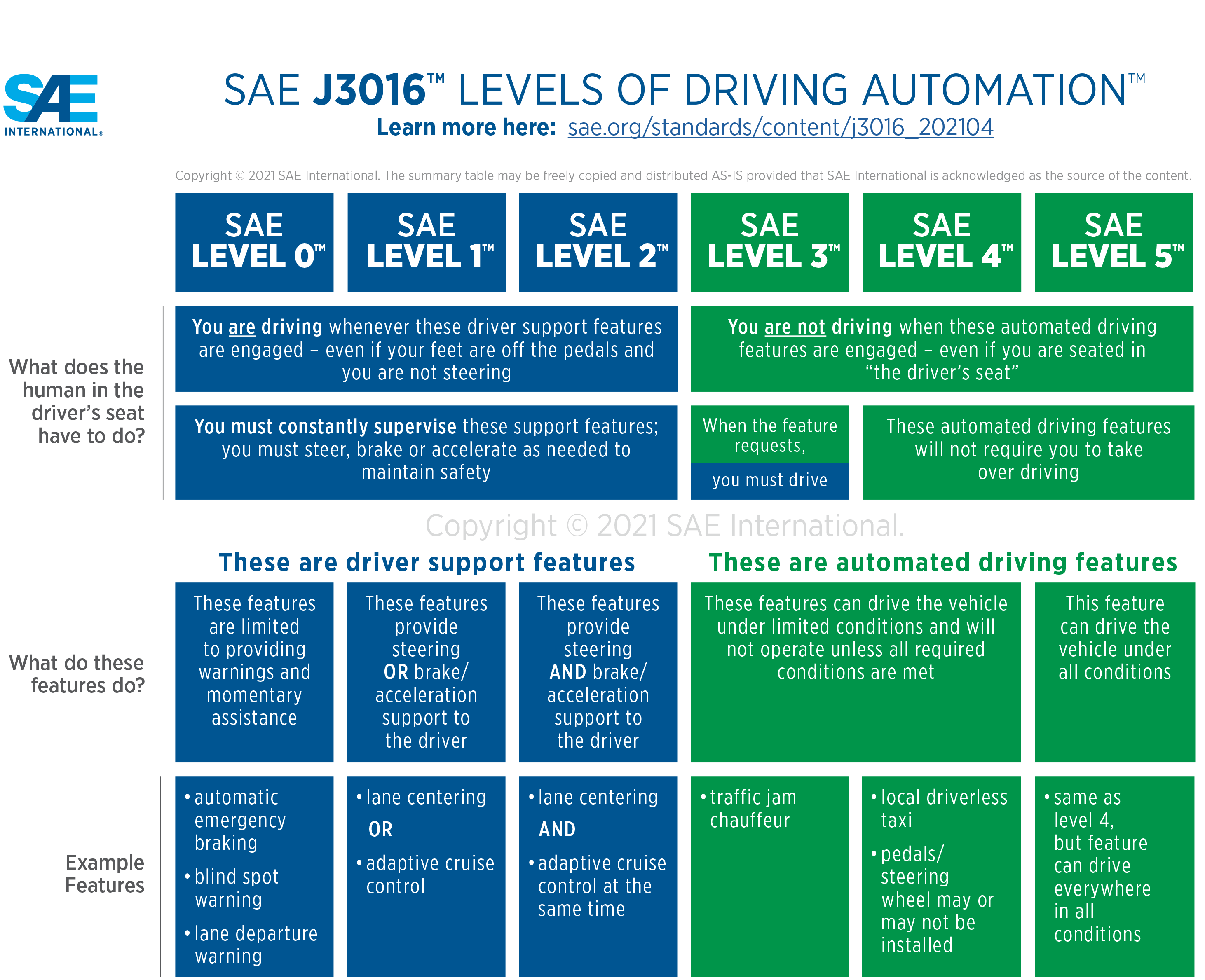
It also comes amidst significant scrutiny over Tesla’s Full Self-Driving (FSD) beta, which is generally considered to be operating at a Level 2 of automation, since drivers are expected to continue monitoring the vehicle at all times. The FSD beta is available to Tesla owners who purchase it, and it offers automated steering, braking and acceleration, though drivers are warned to be prepared to take over driving at any moment.
Tesla defends ‘Autopilot’ and ‘FSD’ names in false advertising case
What are your thoughts? Let me know at zach@teslarati.com, find me on X at @zacharyvisconti, or send your tips to us at tips@teslarati.com.

Elon Musk
Elon Musk and Tesla try to save legacy automakers from Déjà vu
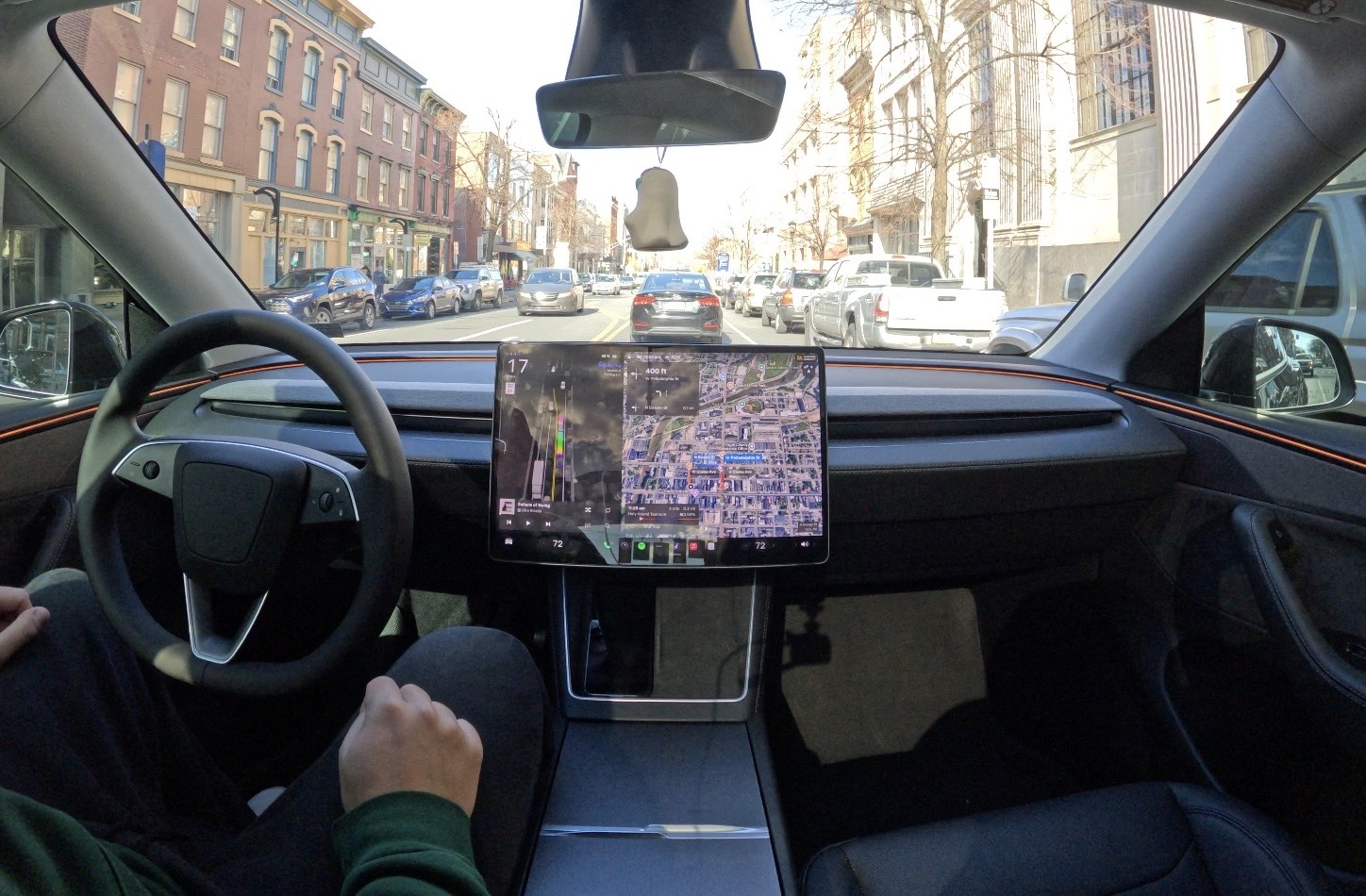
Elon Musk said in late November that he’s “tried to warn” legacy automakers and “even offered to license Tesla Full Self-Driving, but they don’t want it,” expressing frustration with companies that refuse to adopt the company’s suite, which will eventually be autonomous.
Tesla has long established itself as the leader in self-driving technology, especially in the United States. Although there are formidable competitors, Tesla’s FSD suite is the most robust and is not limited to certain areas or roadways. It operates anywhere and everywhere.
The company’s current position as the leader in self-driving tech is being ignored by legacy automakers, a parallel to what Tesla’s position was with EV development over a decade ago, which was also ignored by competitors.
The reluctance mirrors how legacy automakers initially dismissed EVs, only to scramble in catch-up mode years later–a pattern that highlights their historical underestimation of disruptive innovations from Tesla.
Elon Musk’s Self-Driving Licensing Attempts
Musk and Tesla have tried to push Full Self-Driving to other car companies, with no true suitors, despite ongoing conversations for years. Tesla’s FSD is aiming to become more robust through comprehensive data collection and a larger fleet, something the company has tried to establish through a subscription program, free trials, and other strategies.
Tesla CEO Elon Musk sends rivals dire warning about Full Self-Driving
However, competing companies have not wanted to license FSD for a handful of speculative reasons: competitive pride, regulatory concerns, high costs, or preference for in-house development.
Déjà vu All Over Again
Tesla tried to portray the importance of EVs long ago, as in the 2010s, executives from companies like Ford and GM downplayed the importance of sustainable powertrains as niche or unprofitable.
Musk once said in a 2014 interview that rivals woke up to electric powertrains when the Model S started to disrupt things and gained some market share. Things got really serious upon the launch of the Model 3 in 2017, as a mass-market vehicle was what Tesla was missing from its lineup.
This caused legacy companies to truly wake up; they were losing market share to Tesla’s new and exciting tech that offered less maintenance, a fresh take on passenger auto, and other advantages. They were late to the party, and although they have all launched vehicles of their own, they still lag in two major areas: sales and infrastructure, leaning on Tesla for the latter.
I’ve tried to warn them and even offered to license Tesla FSD, but they don’t want it! Crazy …
When legacy auto does occasionally reach out, they tepidly discuss implementing FSD for a tiny program in 5 years with unworkable requirements for Tesla, so pointless. 🤷♂️
🦕 🦕
— Elon Musk (@elonmusk) November 24, 2025
Musk’s past warnings have been plentiful. In 2017, he responded to critics who stated Tesla was chasing subsidies. He responded, “Few people know that we started Tesla when GM forcibly recalled all electric cars from customers in 2003 and then crushed them in a junkyard,” adding that “they would be doing nothing” on EVs without Tesla’s efforts.
Companies laughed off Tesla’s prowess with EVs, only to realize they had made a grave mistake later on.
It looks to be happening once again.
A Pattern of Underestimation
Both EVs and self-driving tech represent major paradigm shifts that legacy players view as threats to their established business models; it’s hard to change. However, these early push-aways from new tech only result in reactive strategies later on, usually resulting in what pains they are facing now.
Ford is scaling back its EV efforts, and GM’s projects are hurting. Although they both have in-house self-driving projects, they are falling well behind the progress of Tesla and even other competitors.
It is getting to a point where short-term risk will become a long-term setback, and they may have to rely on a company to pull them out of a tough situation later on, just as it did with Tesla and EV charging infrastructure.
Tesla has continued to innovate, while legacy automakers have lagged behind, and it has cost them dearly.
Implications and Future Outlook
Moving forward, Tesla’s progress will continue to accelerate, while a dismissive attitude by other companies will continue to penalize them, especially as time goes on. Falling further behind in self-driving could eventually lead to market share erosion, as autonomy could be a crucial part of vehicle marketing within the next few years.
Eventually, companies could be forced into joint partnerships as economic pressures mount. Some companies did this with EVs, but it has not resulted in very much.
Self-driving efforts are not only a strength for companies themselves, but they also contribute to other things, like affordability and safety.
Tesla has exhibited data that specifically shows its self-driving tech is safer than human drivers, most recently by a considerable margin. This would help with eliminating accidents and making roads safer.
Tesla’s new Safety Report shows Autopilot is nine times safer than humans
Additionally, competition in the market is a good thing, as it drives costs down and helps innovation continue on an upward trend.
Conclusion
The parallels are unmistakable: a decade ago, legacy automakers laughed off electric vehicles as toys for tree-huggers, crushed their own EV programs, and bet everything on the internal-combustion status quo–only to watch Tesla redefine the industry while they scrambled for billions in catch-up capital.
Today, the same companies are turning down repeated offers to license Tesla’s Full Self-Driving technology, insisting they can build better autonomy in-house, even as their own programs stumble through recalls, layoffs, and missed milestones. History is not merely rhyming; it is repeating almost note-for-note.
Elon Musk has spent twenty years warning that the auto industry’s bureaucratic inertia and short-term thinking will leave it stranded on the wrong side of technological revolutions. The question is no longer whether Tesla is ahead–it is whether the giants of Detroit, Stuttgart, and Toyota will finally listen before the next wave leaves them watching another leader pull away in the rear-view mirror.
This time, the stakes are not just market share; they are the very definition of what a car will be in the decades ahead.
News
Waymo driverless taxi drives directly into active LAPD standoff
No injuries occurred, and the passengers inside the vehicle were safely transported to their destination, as per a Waymo representative.
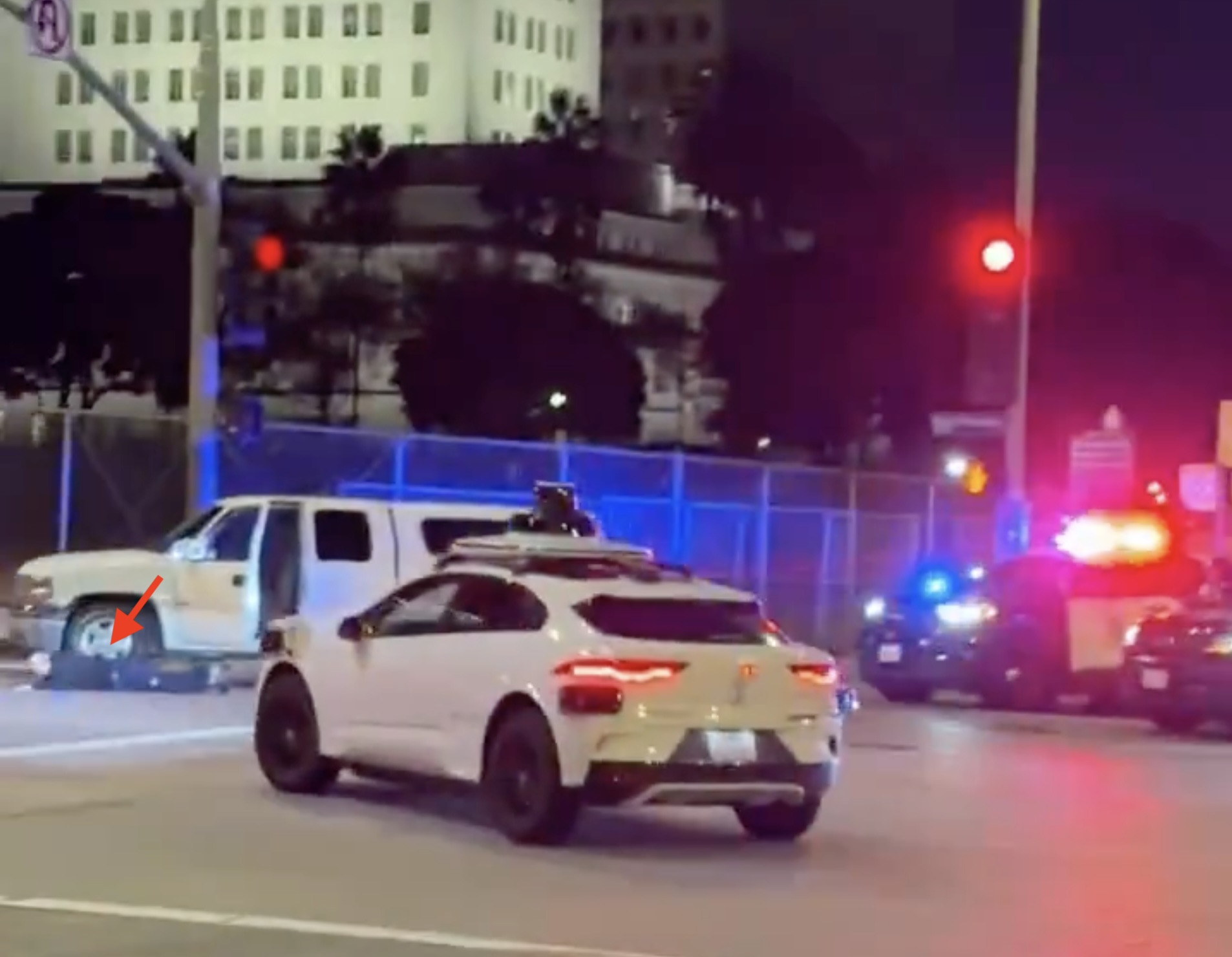
A video posted on social media has shown an occupied Waymo driverless taxi driving directly into the middle of an active LAPD standoff in downtown Los Angeles.
As could be seen in the short video, which was initially posted on Instagram by user Alex Choi, a Waymo driverless taxi drove directly into the middle of an active LAPD standoff in downtown Los Angeles.
The driverless taxi made an unprotected left turn despite what appeared to be a red light, briefly entering a police perimeter. At the time, officers seemed to be giving commands to a prone suspect on the ground, who looked quite surprised at the sudden presence of the driverless vehicle.
People on the sidewalk, including the person who was filming the video, could be heard chuckling at the Waymo’s strange behavior.
The Waymo reportedly cleared the area within seconds. No injuries occurred, and the passengers inside the vehicle were safely transported to their destination, as per a Waymo representative. Still, the video spread across social media, with numerous netizens poking fun at the gaffe.
Others also pointed out that such a gaffe would have resulted in widespread controversy had the vehicle involved been a Tesla on FSD. Tesla is constantly under scrutiny, with TSLA shorts and similar groups actively trying to put down the company’s FSD program.
A Tesla on FSD or Robotaxi accidentally driving into an active police standoff would likely cause lawsuits, nonstop media coverage, and calls for a worldwide ban, at the least.
This was one of the reasons why even minor traffic infractions committed by the company’s Robotaxis during their initial rollout in Austin received nationwide media attention. This particular Waymo incident, however, will likely not receive as much coverage.
News
Tesla Model Y demand in China is through the roof, new delivery dates show
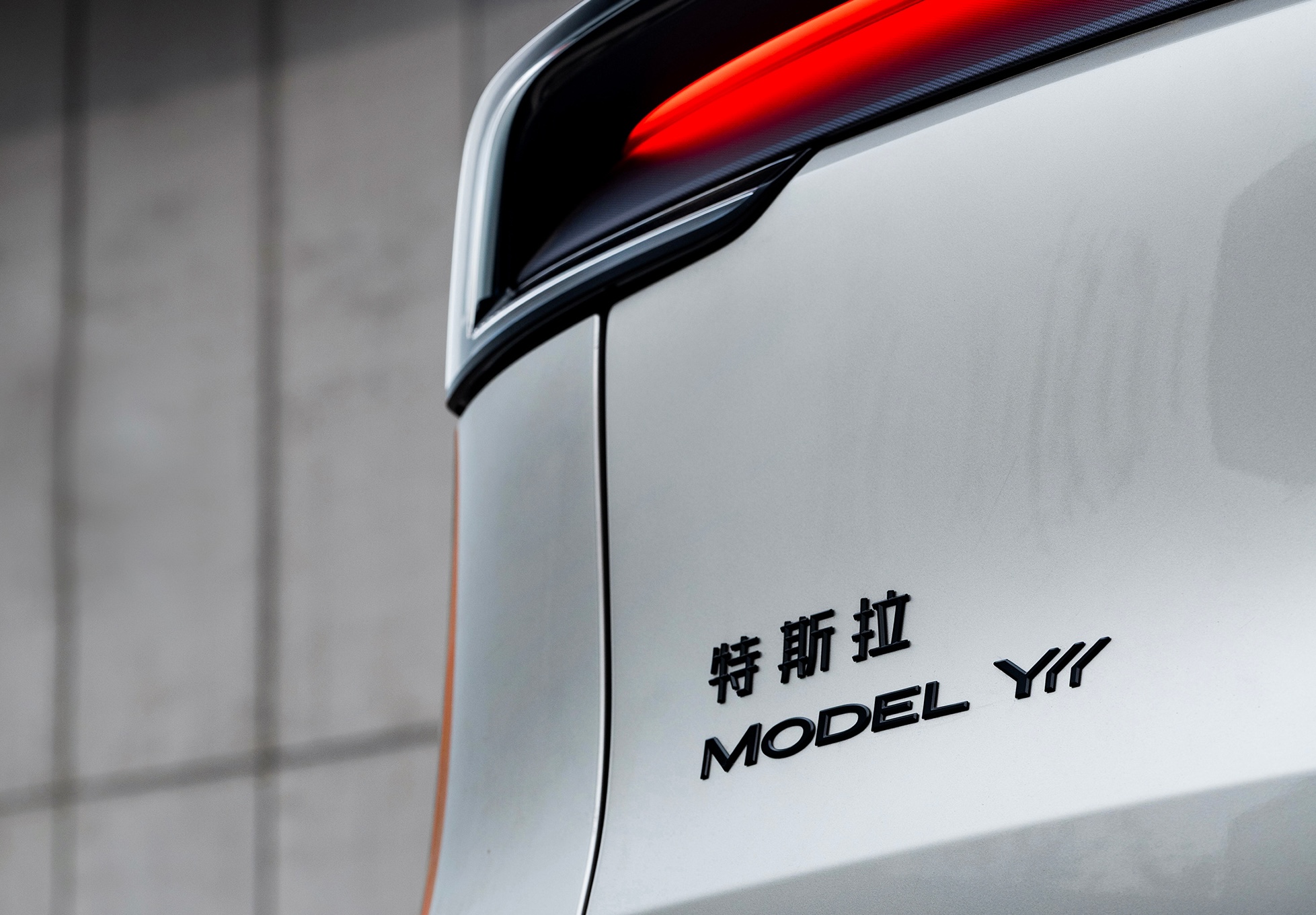
Tesla Model Y demand in China is through the roof, and new delivery dates show the company has already sold out its allocation of the all-electric crossover for 2025.
The Model Y has been the most popular vehicle in the world in both of the last two years, outpacing incredibly popular vehicles like the Toyota RAV 4. In China, the EV market is substantially more saturated, with more competitors than in any other market.
However, Tesla has been kind to the Chinese market, as it has launched trim levels for the Model Y in the country that are not available anywhere else. Demand has been strong for the Model Y in China; it ranks in the top 5 of all EVs in the country, trailing the BYD Seagull, Wuling Hongguang Mini EV, and the Geely Galaxy Xingyuan.
The other three models ahead of the Model Y are priced substantially lower.
Tesla is still dealing with strong demand for the Model Y, and the company is now pushing delivery dates to early 2026, meaning the vehicle is sold out for the year:
NEWS: New orders for all four Tesla Model Y trims in China are now officially sold out for 2025, as the factory’s remaining production capacity for the year has been fully allocated.
Estimated delivery dates for new orders now show January-February 2026. pic.twitter.com/Dfnu7yY58N
— Sawyer Merritt (@SawyerMerritt) December 1, 2025
Tesla experienced a 9.9 percent year-over-year rise in its China-made EV sales for November, meaning there is some serious potential for the automaker moving into next year despite increased competition.
There have been a lot of questions surrounding how Tesla would perform globally with more competition, but it seems to have a good grasp of various markets because of its vehicles, its charging infrastructure, and its Full Self-Driving (FSD) suite, which has been expanding to more countries as of late.
Tesla Model Y is still China’s best-selling premium EV through October
Tesla holds a dominating lead in the United States with EV registrations, and performs incredibly well in several European countries.
With demand in China looking strong, it will be interesting to see how the company ends the year in terms of global deliveries.
